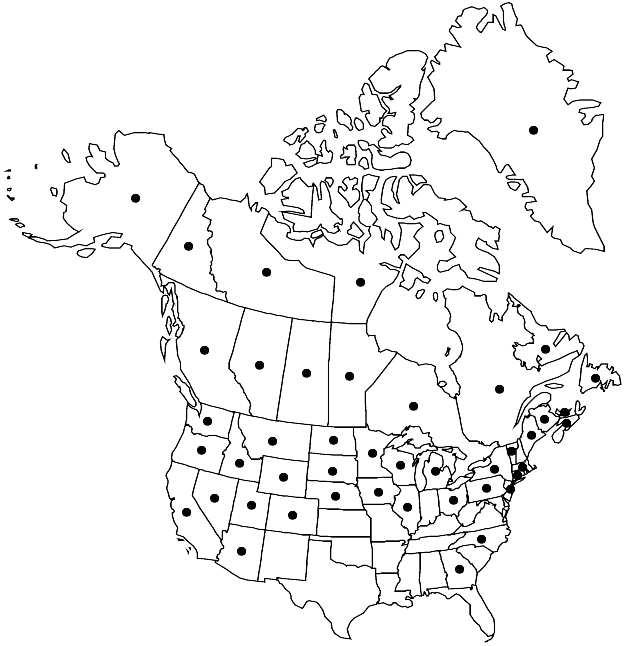Elodium blandowii
Phytoneuron 2012 – 70: 6. 2012.
Plants large, in coarse mats, yellow to yellowish green. Stems yellow to red-brown, erect, evenly, closely and strictly 1-pinnate, branches nearly equal, straight; central strand absent; paraphyllia many, dense, long-floccose on stems and branches, to 27 cells in length. Stem and branch leaves close, overlapping, more erect than spreading when moist, cordate-acuminate, sulcate-plicate, stem leaves 1.2–1.5 mm, branch leaves 0.6–0.8 mm; margins erect-recurved in acumen, denticulate, teeth short, sharp, from projecting distal cell ends; apex abruptly short-acuminate, acumen broad, channeled; costa 2/3–4/5 leaf length, ending at or before acumen, proximal abaxial surface with 1 or 2 scattered teeth; stem leaf laminal cells oblong-fusiform or oblong-rhomboidal, angles rounded, abaxial surface strongly 1-papillose centrally or nearer distal ends of lumen, walls incrassate. Perichaetia leaf margins toothed distally, teeth short, irregularly spaced, distant, sharply pointed, variously antrorse to retrorse, regularly denticulate in acumen. Seta 4–6 cm. Capsule 3–4 mm.
Phenology: Capsules mature spring.
Habitat: Hydric soil in open or wooded fens, muskegs, wet habitats, along streams, edges of swamp forests, wet base of trees in hummocks in peat bogs and bogs of Thuja occidentalis, tundra benches and gravel bars of creeks, calciphile
Elevation: moderate to high elevations
Distribution

Greenland, Alta., B.C., Man., N.B., Nfld. and Labr., N.W.T., N.S., Nunavut, Ont., P.E.I., Que., Sask., Yukon, Alaska, Ariz., Calif., Colo., Conn., Ga., Idaho, Ill., Iowa, Maine, Mass., Mich., Minn., Mont., Nebr., Nev., N.J., N.Y., N.C., N.Dak., Ohio, Oreg., Pa., S.Dak., Utah, Vt., Wash., Wis., Wyo., Eurasia.
Discussion
The marginal teeth of the leaves of Elodium blandowii, especially proximally and medially, are sharply dentate-serrate, sharper than those of E. elodioides, whereas the margins of E. paludosum are nearly entire, lacking teeth. The papillae are narrow and elevated and, especially on branch leaves, antrorsely curved like those in Echinophyllum, but much more delicate. The length of the seta of E. blandowii (4–6 cm) is more than twice that of E. elodioides or E. paludosum (both 2–2.8 cm) and the capsules are larger (3–4 mm in E. blandowii, 2–2.5 mm in both E. elodioides and E. paludosum).
Selected References
None.
